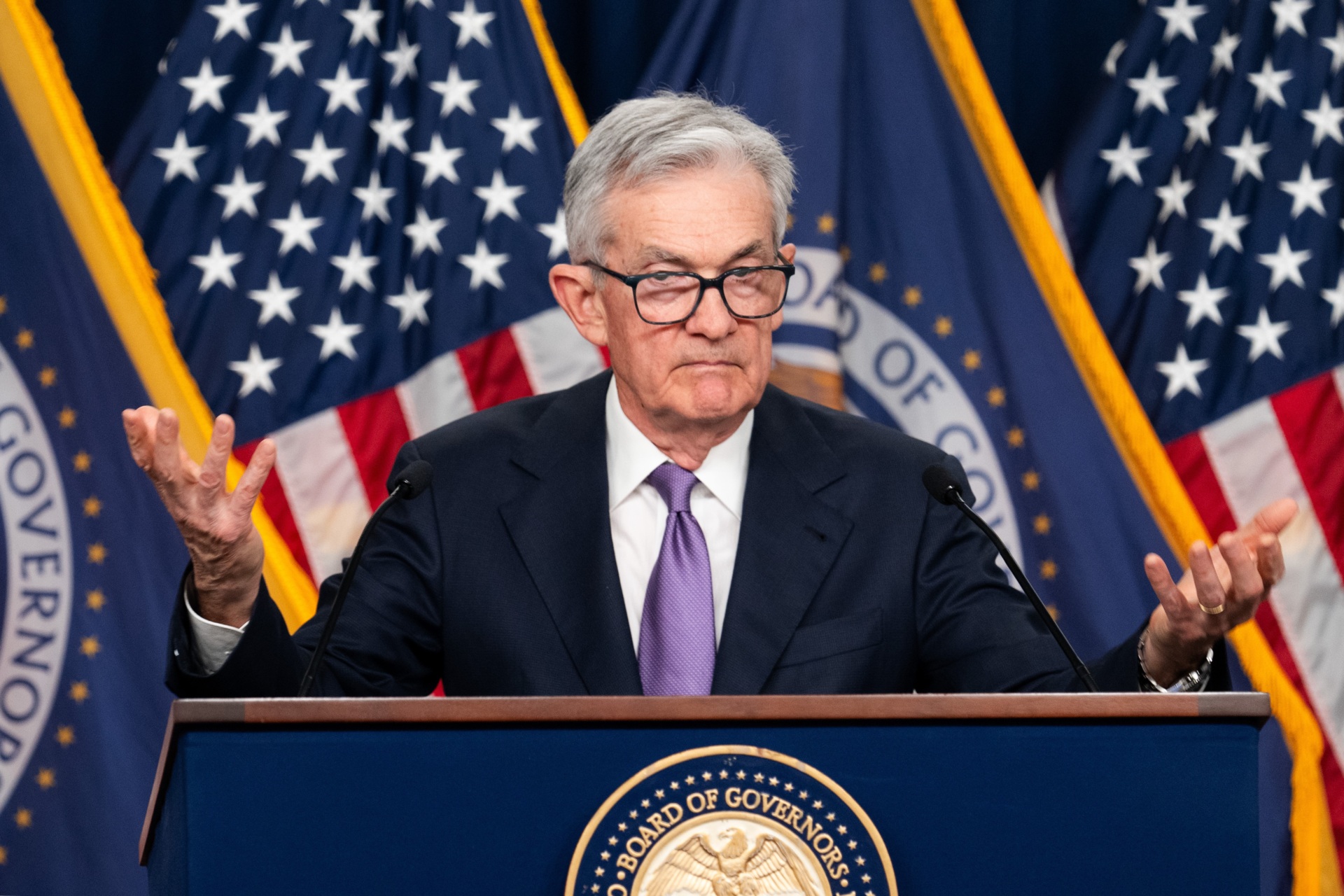Wall Street’s Holiday Party Hangover
The conviction among traders that the Federal Reserve will start cutting rates in the first quarter of next year keeps strengthening. The basic premise behind that conviction, however, is looking shakier.
The implied odds of a March rate cut are up to 83 percent, according to the CME Group’s FedWatch tool. A week ago, following the Fed’s December meeting, they were just 75 percent. A month ago, prior to the meeting, they stood at 21 percent.
Even the odds of a January rate cut are rising. Although still a long shot, the chances of a rate cut implied by the fed funds futures market are now 14.5 percent. A week ago, they were eight percent. A month ago, the odds were zero for a cut and 12 percent for a hike.
What we have been witnessing is a rapid shift in the conventional wisdom on Wall Street about rate cuts. Troublingly, this is happening despite the evidence that the economy is no longer slowing gradually but actually gaining steam.
October Bad News Was Good News for the Rate Cut Thesis
The argument that the Fed would be in a position to cut rates in the first three months of next year was rooted in the forecast that the economy had burnt itself out in the blaze of the third quarter’s stunning 4.9 percent annual rate of GDP growth.
The “Blue Chip” consensus of top economists has the economy growing at just over one percent in the fourth quarter. Until relatively recently, the Atlanta Fed’s GDPNow barometer had the economy growing only slightly faster than that. The Fed doesn’t release quarterly growth projections of its members, but the December summary’s forecast of 2.6 percent for this year implied growth south of two percent in the final three months of the year.
There’s good evidence that growth slowed in October. The unemployment rate picked up to 3.9 percent, and U.S. employers reportedly added just 150,000 workers to payrolls. People were talking about whether the Sahm Rule—a recession indicator based on increasing unemployment rates—would be triggered. The Chicago Fed’s National Activity Index turned negative, indicating “below trend” growth—which effectively means below 1.8 percent.

Federal Reserve Chair Jerome Powell attends a press conference in Washington, DC, on Dec. 13, 2023, following the Federal Open Market Committee meeting. (Liu Jie/Xinhua via Getty Images)
The Conference Board’s consumer confidence index declined, and there was a steep plunge in the University of Michigan’s consumer sentiment index to the lowest level since May. Homebuilder confidence dropped in October, as those famous long and variable lags of monetary policy finally seemed to weigh on the residential construction sector.
Retail sales fell for the first time since March. The consumer price index was reportedly flat for the month—indicating no inflation—and nominal consumer spending rose at its second slowest pace of the year (after March’s tiny contraction).
Durable goods orders plunged 5.4 percent in October. Nondefense capital goods orders excluding aircraft turned negative, suggesting a decline in business investment. Industrial production declined 0.6 percent, according to the Federal Reserve.
Season’s Greetings from Fourth Quarter Data
The October data comes in starting in late October. Most if it does not see the light of day until November. Some of it only emerges in December. So, the impression that the economy was slowing because of weak October data understandably extended throughout the fourth quarter.
The recent data, however, suggests that October may have been the ebb of economic growth. The Chicago Fed National Activity Index for November, which was released on Tuesday, indicates the economy grew above trend in November. The unemployment rate in November fell to 3.7 percent, and job creation jumped to 199,000. Everyone realized the Sahm Rule was not going to bite anytime soon.
Consumer confidence increased in November, boosted by an uptick in expectations, according to the Conference Board. The December reading was even better, this time boosted by an improved assessment of current conditions and a sharp increase in expectations. In fact, the expectations measure returned to a level last seen in July—the start of the quarter that saw nearly five percent growth. The University of Michigan’s consumer sentiment measure continued to slip in November but surged upward in December, erasing months of previous declines.
Retail spending grew in November. Gallup reported that planned holiday spending increased as the season stretched on, a very rare positive development in the history of Gallup’s surveys. The consumer price index inched up, returning to positive territory. Personal consumption expenditures rose 0.2 in nominal terms, twice the pace of the prior month.

Shoppers walk around at Macy’s store in Herald Square on December 23, 2023, in New York City. (Jeenah Moon/Getty Images)
Durable goods orders jumped 5.4 percent in November, including a solid 0.8 percent boost in those core capital goods orders that exclude defense and aircraft orders. Industrial production rose in November, and capacity utilization increased.
Homebuilder sentiment continued to fall in November but made a big comeback in December. Mortgage rates have dropped precipitously, spurring an increase in home sales.
Finally, The Atlanta Fed’s GDPNow is currently estimating 2.3 percent growth for the fourth quarter.
In other words, many of the things that were implying a gradual slowing as the fourth quarter got underway are now telling us that the economy is once again accelerating.
Accelerating growth will make it much harder for the Federal Reserve to justify a rate cut early next year. When the Fed meets in January, it will just have received the growth estimates for the fourth quarter. If these exceed what Fed officials expected—as they seem likely to do—the Fed will definitely not cut rates at that meeting. By the March meeting, Fed officials will have the revised figures for the fourth quarter but not yet the first quarter of next year. This means that faster-than-expected fourth quarter growth will probably also eliminate the chances of a March cut.
While it is the season to be merry on Wall Street right now, the new year may bring some unwelcome regret at the excessive holiday spirits when the dreams of rate cut sugar plums confront the lumps of no cut coal.

COMMENTS
Please let us know if you're having issues with commenting.